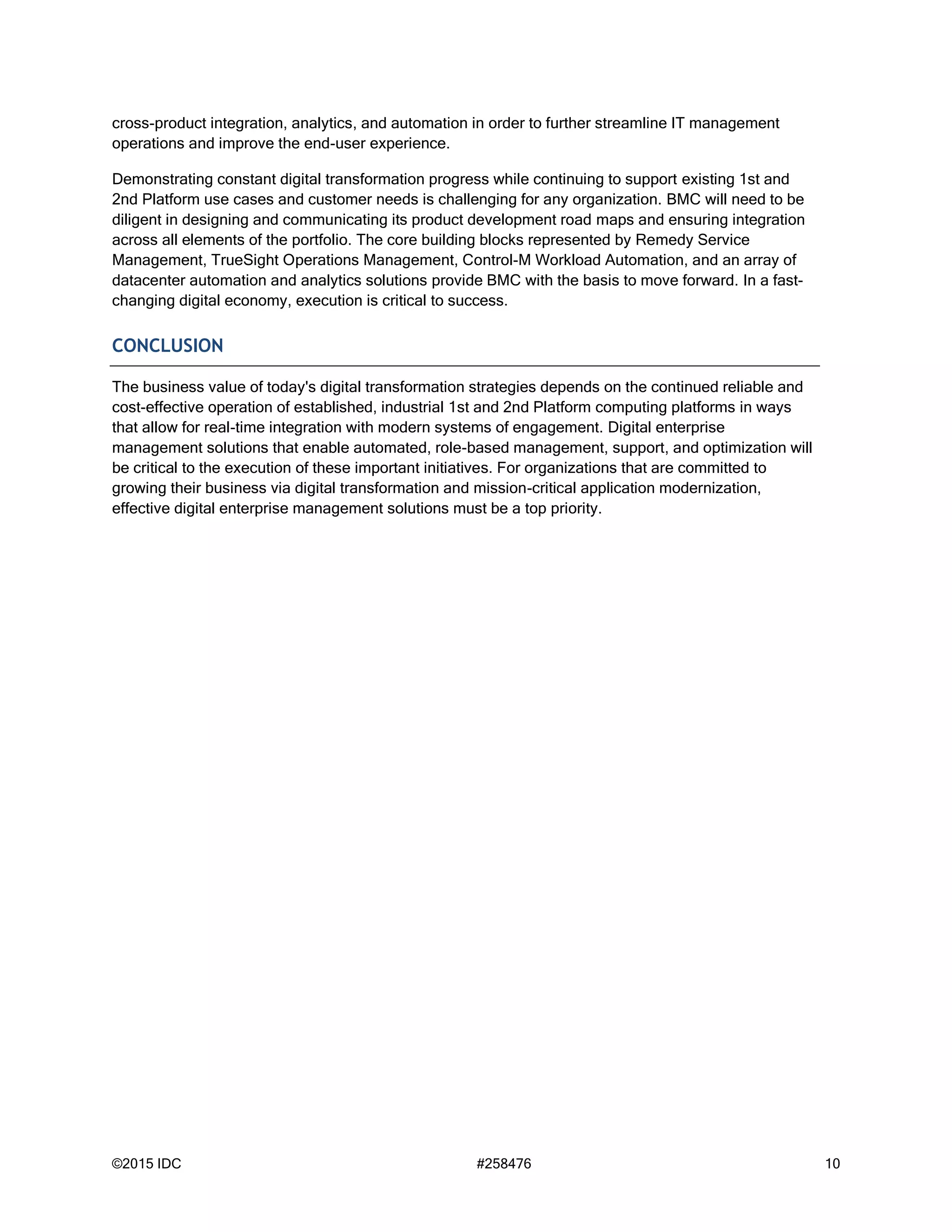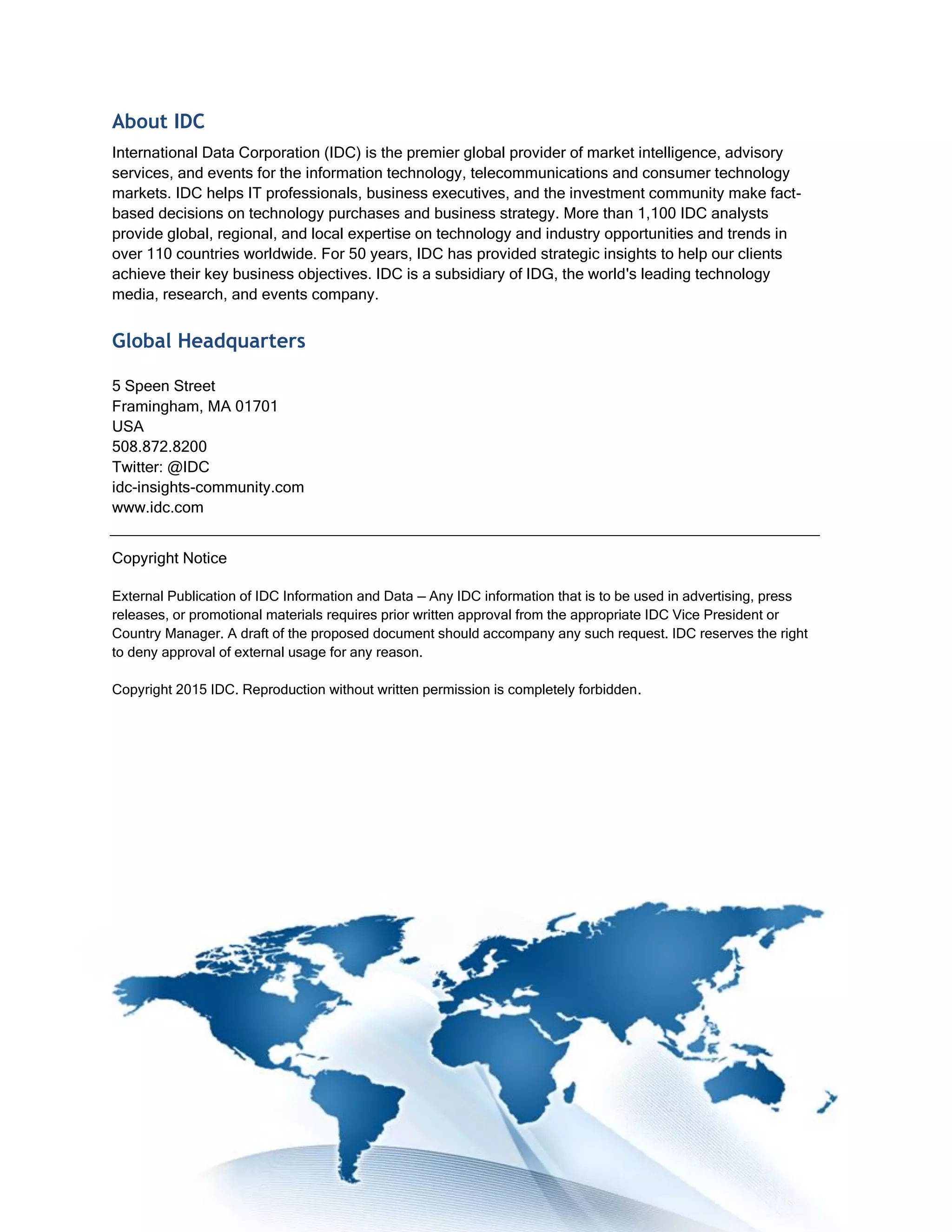This document discusses how digital transformation is impacting enterprise IT and the need for digital enterprise management. It notes that digital technologies now represent 30% of IT spending and all growth. Enterprises need to integrate new technologies while maintaining existing systems. The document outlines four priorities for digital enterprise management: digital service management, digital infrastructure optimization, digital enterprise automation, and digital service assurance. BMC's solutions address these priorities by providing integrated automation, monitoring, analytics and collaboration tools to support dynamic digital business architectures.

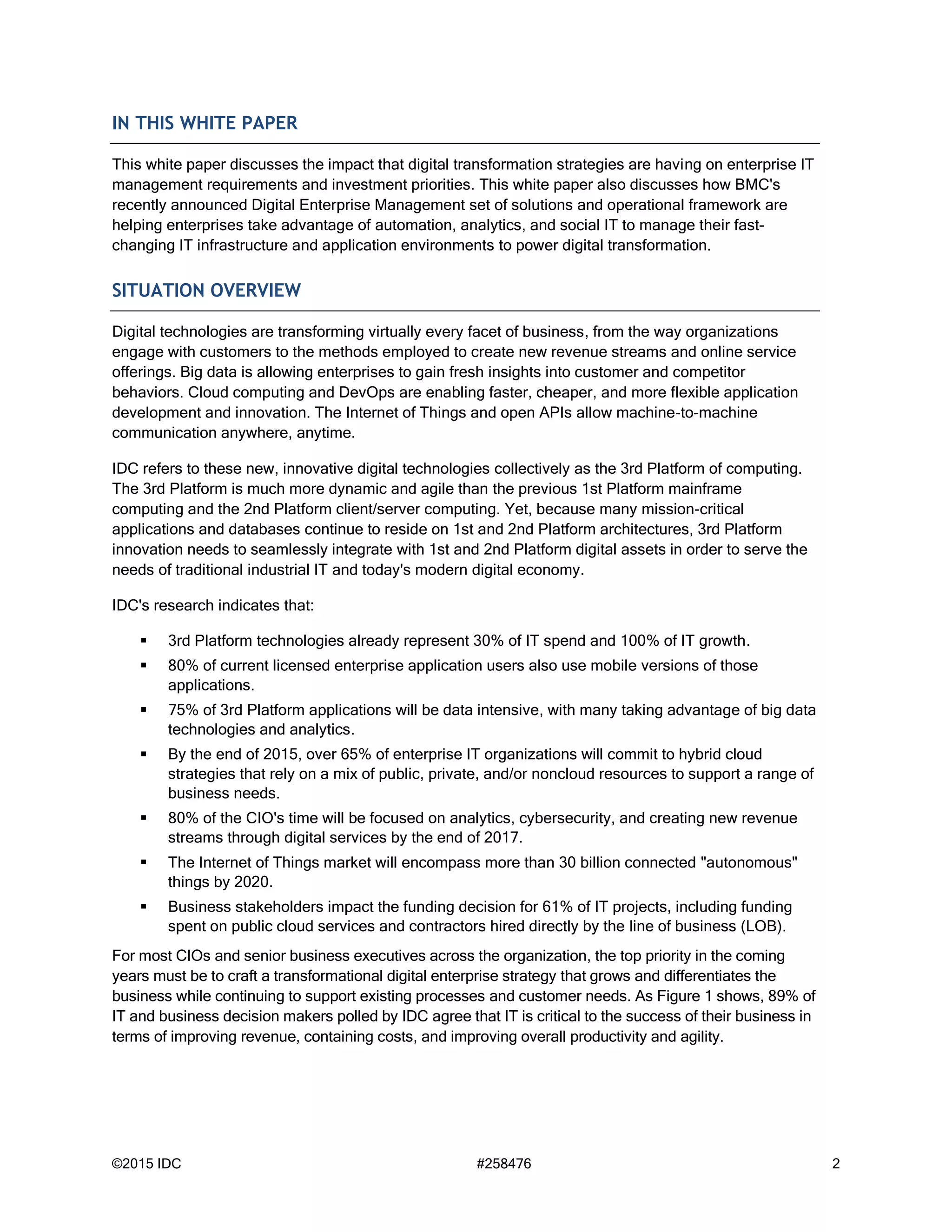
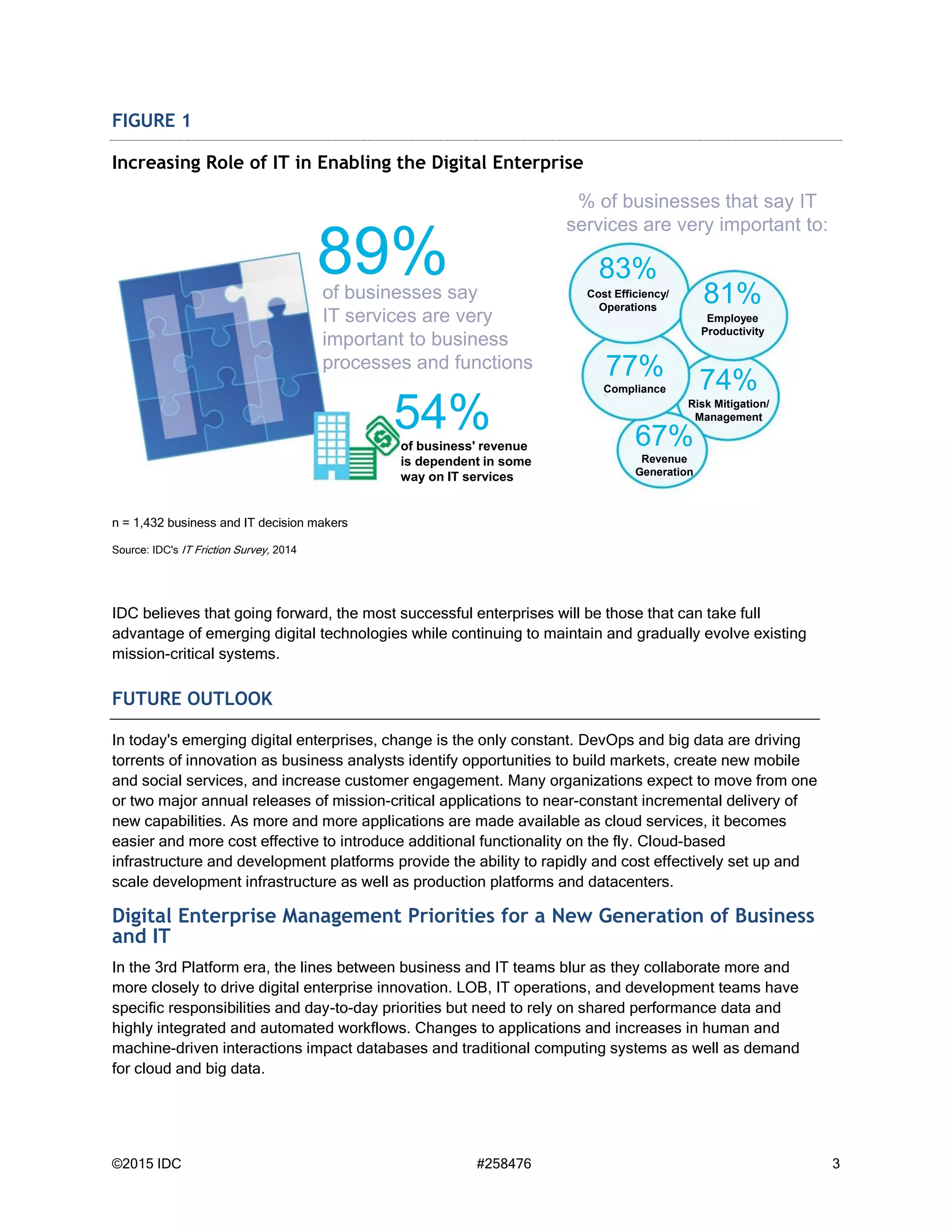
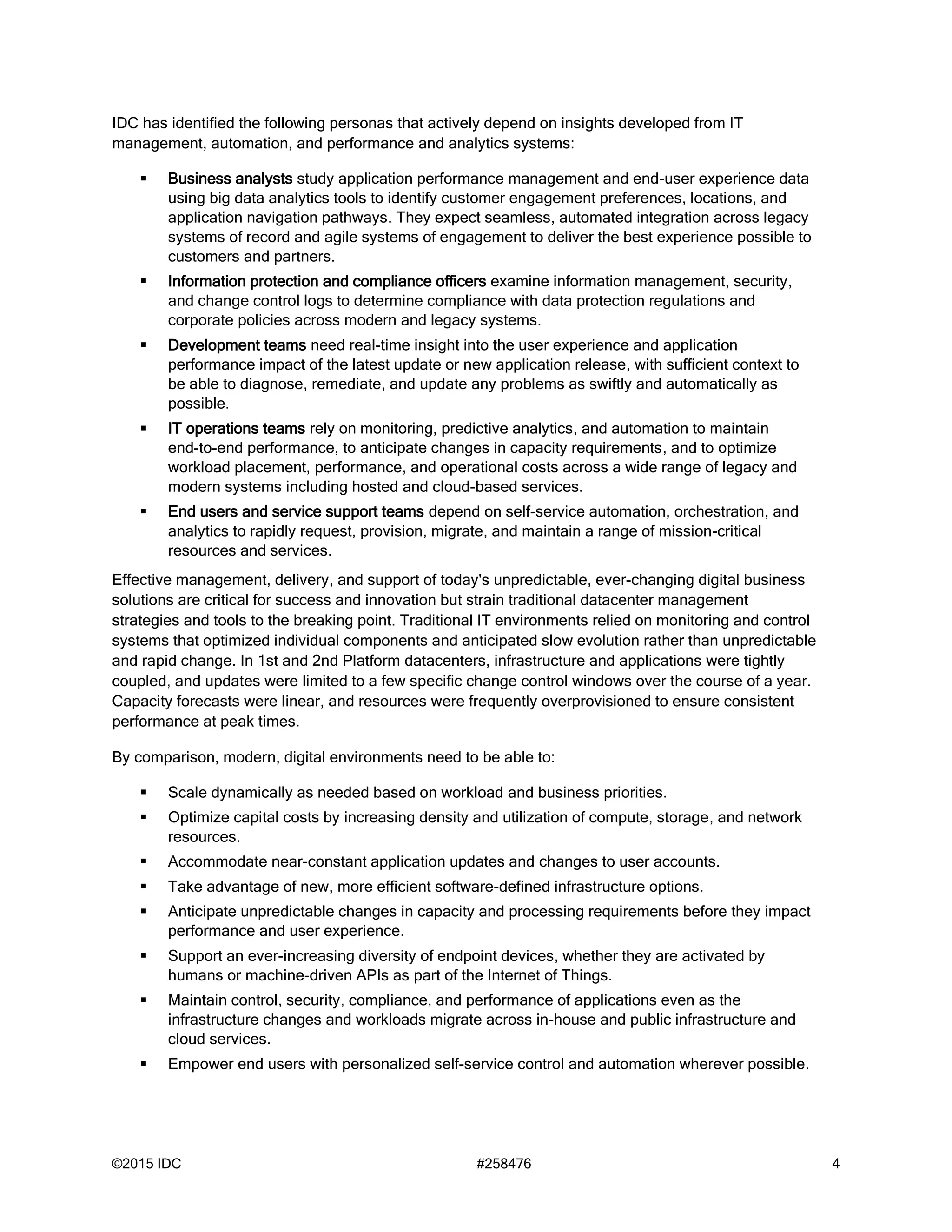
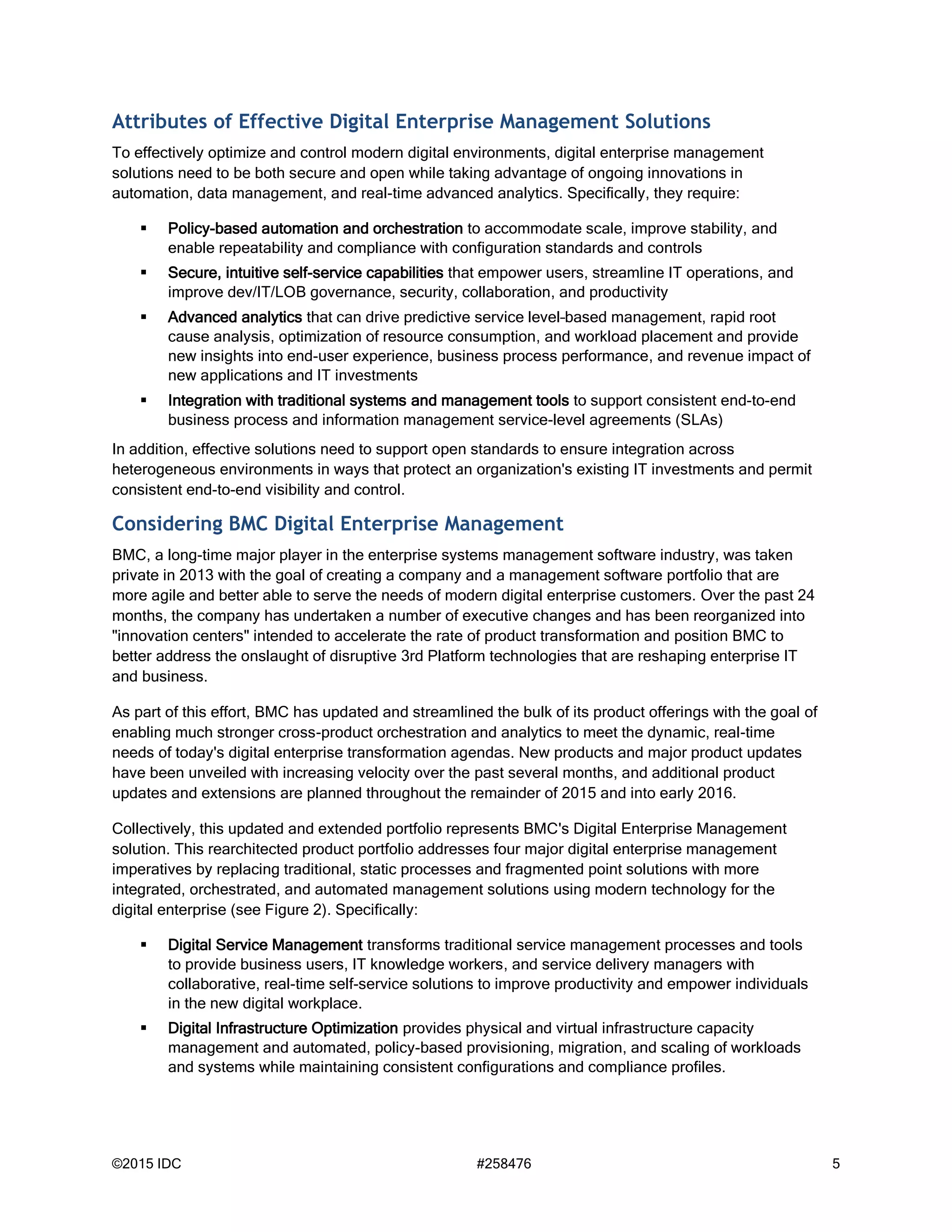


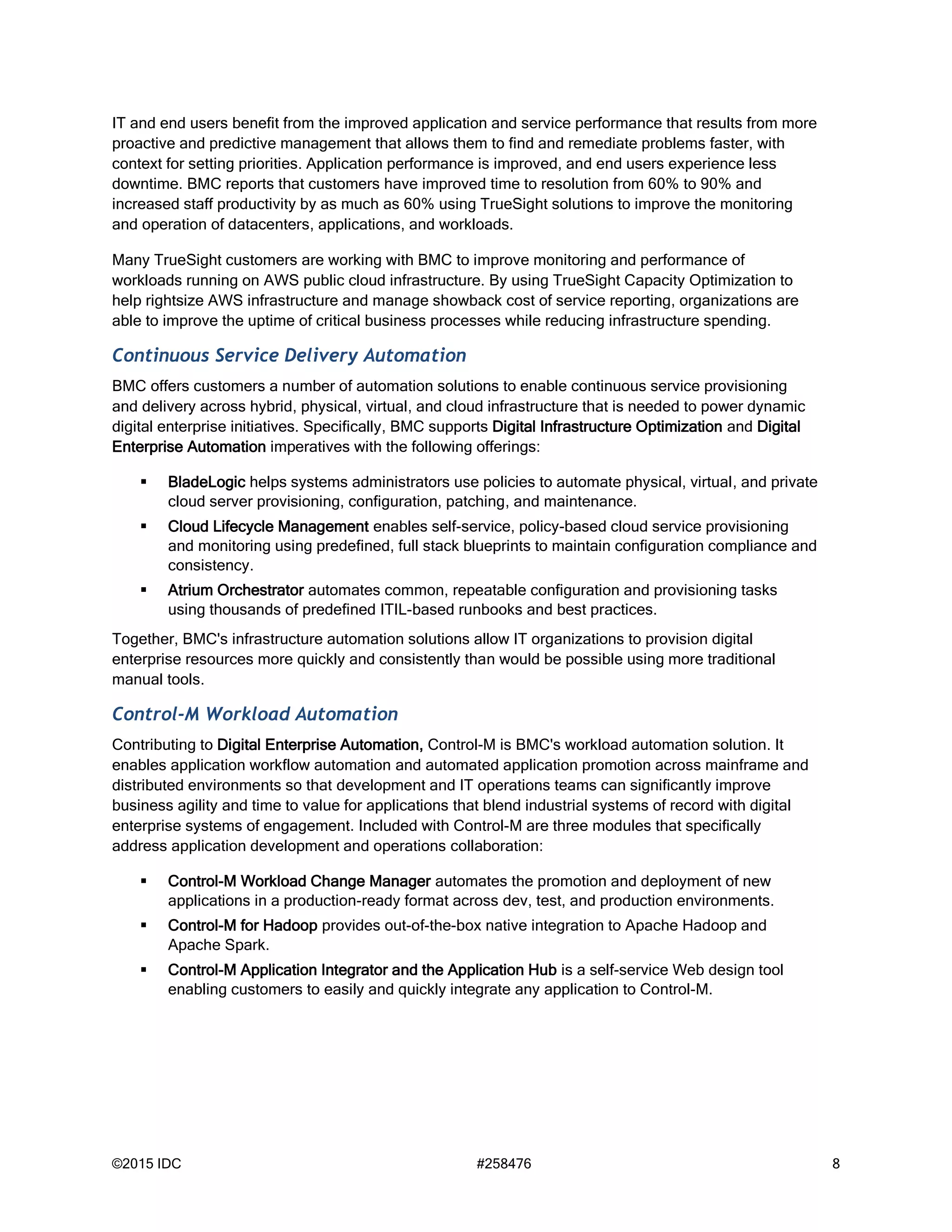
![©2015 IDC #258476 9
BMC reports that the Control-M family is helping customers significantly streamline complex
application deployments and upgrades. For example, a major U.S. retailer allows application
developers to use Control-M to self-schedule test and dev job requests and is encouraging developers
to make their own changes to job workflows in both stage and production cycles as well. Work
turnaround times have dropped measurably to under 24 hours in many cases.
Another example is how a major international bank uses Control-M to enable an internal self-service
Hadoop analytics cloud offering that provides members with the ability to automate queries across
data drawn from a wide range of sources including DB2 and UDB databases, EBCDIC files from the
mainframe, and logs from the Web infrastructure and from several other applications. By using
Control-M to orchestrate complex data extraction and integration processes, the organization has been
able to optimize the use and analysis of the information collected and provide cost-effective, scalable
infrastructure that can deliver existing and future services via the cloud.
Mainframe MLC Cost Management Solutions
Many important digital business applications are designed to engage with customers and partners
across a diverse range of endpoint devices as well as the Internet of Things. In many cases, those
interactions and API calls require integrations with data and processes running on mission-critical,
industrial mainframe systems. As digital engagement increases, so do the processing demands on
the back end. BMC's mainframe solutions contribute toward cost-effective Digital Infrastructure
Optimization and can serve to help power BMC's other digital imperatives as well.
For organizations that rely on zEnterprise mainframe computing to provide mission-critical application
support and contribute to digital transformation strategies, the cost of usage-based mainframe
software licenses (Monthly License Charge [MLC] costs) can represent as much as 30% of total
monthly mainframe operations costs. BMC's Mainframe MLC Cost Management Solutions support a
number of digital enterprise management imperatives by offering customers a set of tools to rein in
these recurring costs and make more economic use of costly mainframe computing resources.
Specifically, customers are using the following tools to help reduce MLC costs:
System Optimizer for zEnterprise to provide data access and communication across logical
partitions (LPARs), making it possible to efficiently redirect workloads among DB2, IMS, and
CICS instances to reduce MLC charges
Cost Analyzer for zEnterprise to provide reporting and predictive modeling to analyze system
and cost data, identify system capacity peaks, evaluate potential changes for cost and
performance impacts, and recommend more efficient workload allocations
Intelligent Capping (iCap) for zEnterprise to dynamically automate and optimize defined
capacity settings to lower MLC
BMC reports that depending on the size of the organization's mainframe environment, customers have
experienced 10-30% monthly reductions in MLC charges, allowing them to support rapidly increasing
processing volumes driven by big data and digital transformation initiatives while keeping MLC costs
stable or lower.
Challenges/Opportunities
Just as its customers plan for digital transformation initiatives that gradually extend online engagement
and optimize integrations across different applications, BMC expects to continue to evolve its Digital
Enterprise Management portfolio over time. Customers should expect to see ongoing improvement in](https://image.slidesharecdn.com/2518a981-da29-4b69-ae01-81ed137ccb35-150914124253-lva1-app6892/75/IDC-BMC-Digital-Enterprise-Management-Powers-Digital-Business-Transformation-9-2048.jpg)
